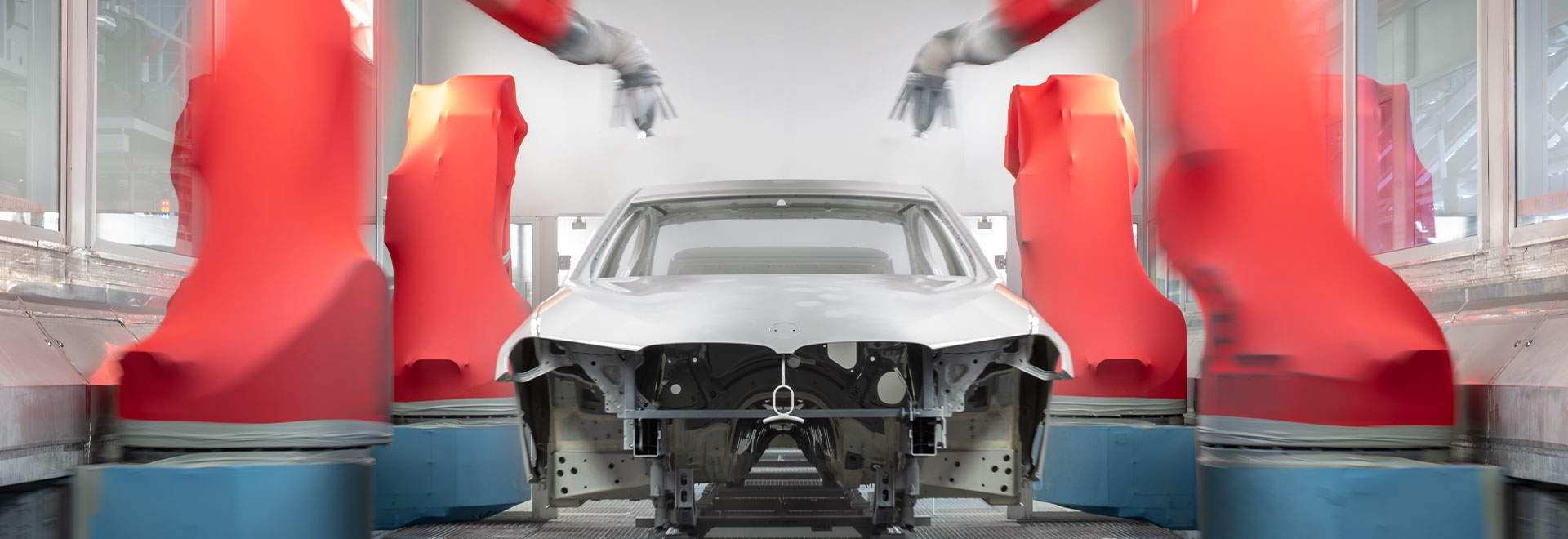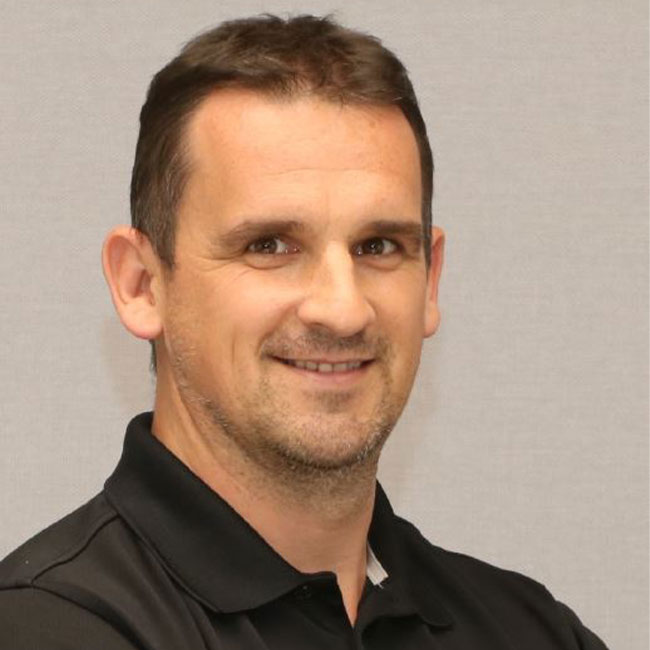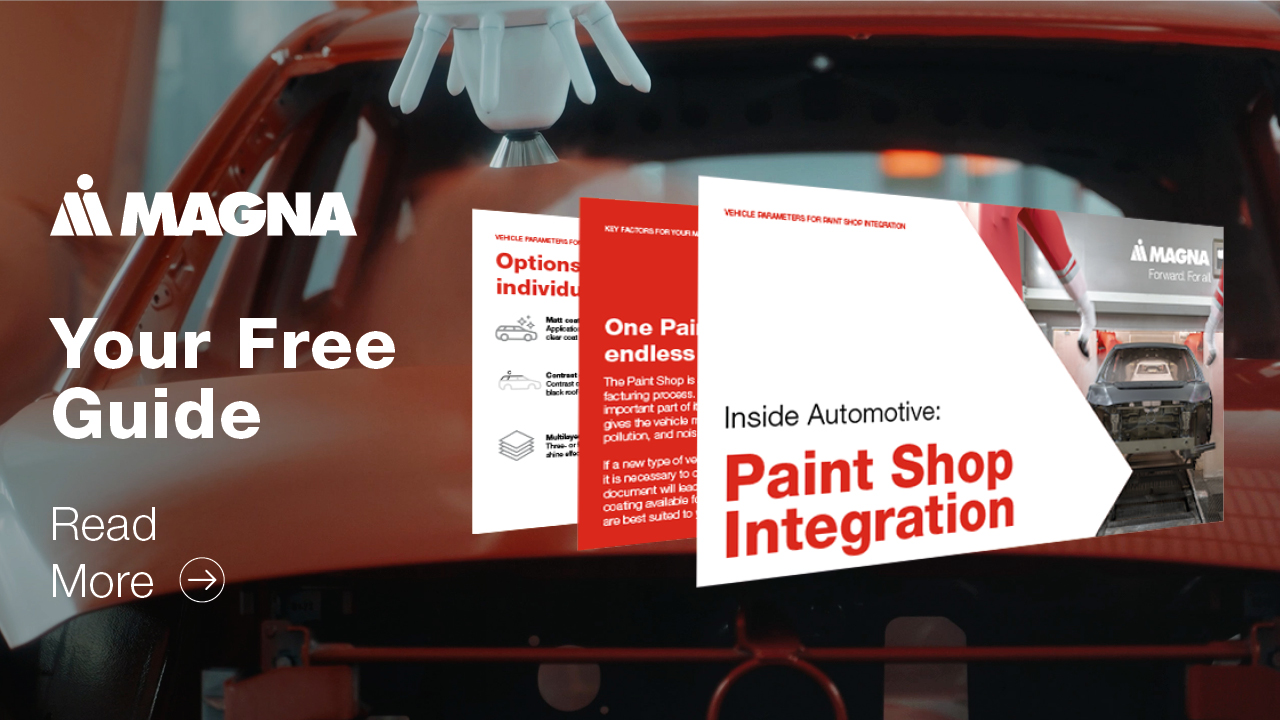DIFFERENT PROCESSES FOR DIFFERENT CAR BODIES IN THE SAME PAINT SHOP
Magna’s paint shop coats many different types of car bodies. This even includes bodies of mixed construction in addition to 100% sheet steel bodies and 100% aluminum bodies.
Future challenges in this field are found with BEV architecture in particular. The sill area is designed to be especially rigid in battery-powered vehicles, and cast parts are increasingly being integrated into this area to optimally protect both the occupants and the underfloor batteries in the event of a crash. The mixed construction of different materials thus becomes even more complex.
As a result, the requirements are changing for pre-treatment, e-coating (electro-coating), and for the dryer because heating and cooling ramps need to be precisely coordinated and controlled for the thermal expansion of the different metals – aluminum and steel. The bodywork connections and adhesives must also be regarded.
MAGNA’S PAINT SHOP IS SUITED FOR VOLUMES FROM 1 TO 280,000
Magna’s multi-OEM paint shop can do more than coat large-volume products efficiently and of utmost quality. Its process flexibility also ensures a high level of scalability in the case of highly fluctuating production volumes. The ability to cover small volumes and special series down to batch size 1 (for painting prototypes, for example) distinguishes the paint shop at Graz from the OEM’s in-house systems which are geared purely towards serial production.
For these demands, several bypass lines and special workstations are implemented within the flexible paint shop. Here, specific tasks can be executed without impairing serial production.
FLEX TOP COAT CONCEPT FOR SPECIAL AND SMALL SERIES
In the top coat station, the option of feeding in special colors ensures that even small batch sizes and individual items can be painted with the same quality as large volume products. In addition to the 25 ring lines, in which the top coats in the standard colors are kept ready from the usual 300-liter containers, there is also a feed of special colors in 25-liter containers, the so-called hobbocks.
Thanks to the hobbocks, up to eight different special colors can be painted per hour without disrupting the series production process. Movable cleaning pistons in the lines - called the Special Paint Supply - help to minimize paint consumption and rinsing losses.
An upstream masking station also enables a high degree of flexibility for partial surface and contrast coatings that require customized preparation. There are also variation options for finalization: three different clear coats can be applied. In addition to the standard clear coat, a more scratch-resistant coating and a matt clear coat (which is increasingly in demand) are also possible.
BEST COLOR FIDELITY ALSO FOR ADD-ON PARTS FOR SPECIAL EDITIONS
Magna’s paint shop is not restricted to car bodies and sheet metal parts, either. For special editions, plastic add-on parts can be painted in the same paint shop. Car body and add-on parts can be coated consecutively with the same color system from the same hobbock. This way, a perfect match in quality and coloring between car body and add-on parts is ensured. To prevent overstraining of the material, the plastic add-on parts are then brought into an 80-degree drying oven.
This method produces exceptional results in color uniformity and harmony. This is especially true for small- and special-volume series that add-on parts undergoing a separate painting process can hardly match – and particularly for small- and special-volume series where such a quality level is normally unachievable.
MAGNA AS A COMPLETE VEHICLE ONE-STOP-SHOP – EVERYTHING FROM A SINGLE SOURCE
Magna's paint business unit has a very broad, overall vehicle knowledge base – thus, new product lines can be integrated very quickly, conveniently, and cost-effectively for the customer. The paint shop team can draw on experts and focus groups for simultaneous engineering, plant and process planning, vehicle control, equipment design and production, application experts and, of course, a very experienced production team, which simplifies and shortens the integration process significantly.
The wide-ranging and comprehensive in-house expertise covers the entire product development process from concept development and series development to ramp-up and series production.
READY FOR THE FUTURE – WITH MAGNA’S NET-ZERO PROGRAM
During the production of a complete vehicle, around 70% of energy costs incur in the paint shop. It is therefore a major challenge to combine this production area with the Magna NET ZERO program. Magna is committed to the goal of making its entire production process 100% sustainable by 2050.
A transformation process called Paint Strategy 2.0 has already been launched to achieve this goal in the Painted Body division. The process involves creating energy transparency, promoting energy efficiency in the plants, and gradually switching to renewable energies. This will make the paint shop, which has been in operation for 30 years, fit for the future – with the vision of achieving flexibility, competitiveness and sustainability in equal measure.




.tmb-widescreen.webp?sfvrsn=8d57edff_1)

